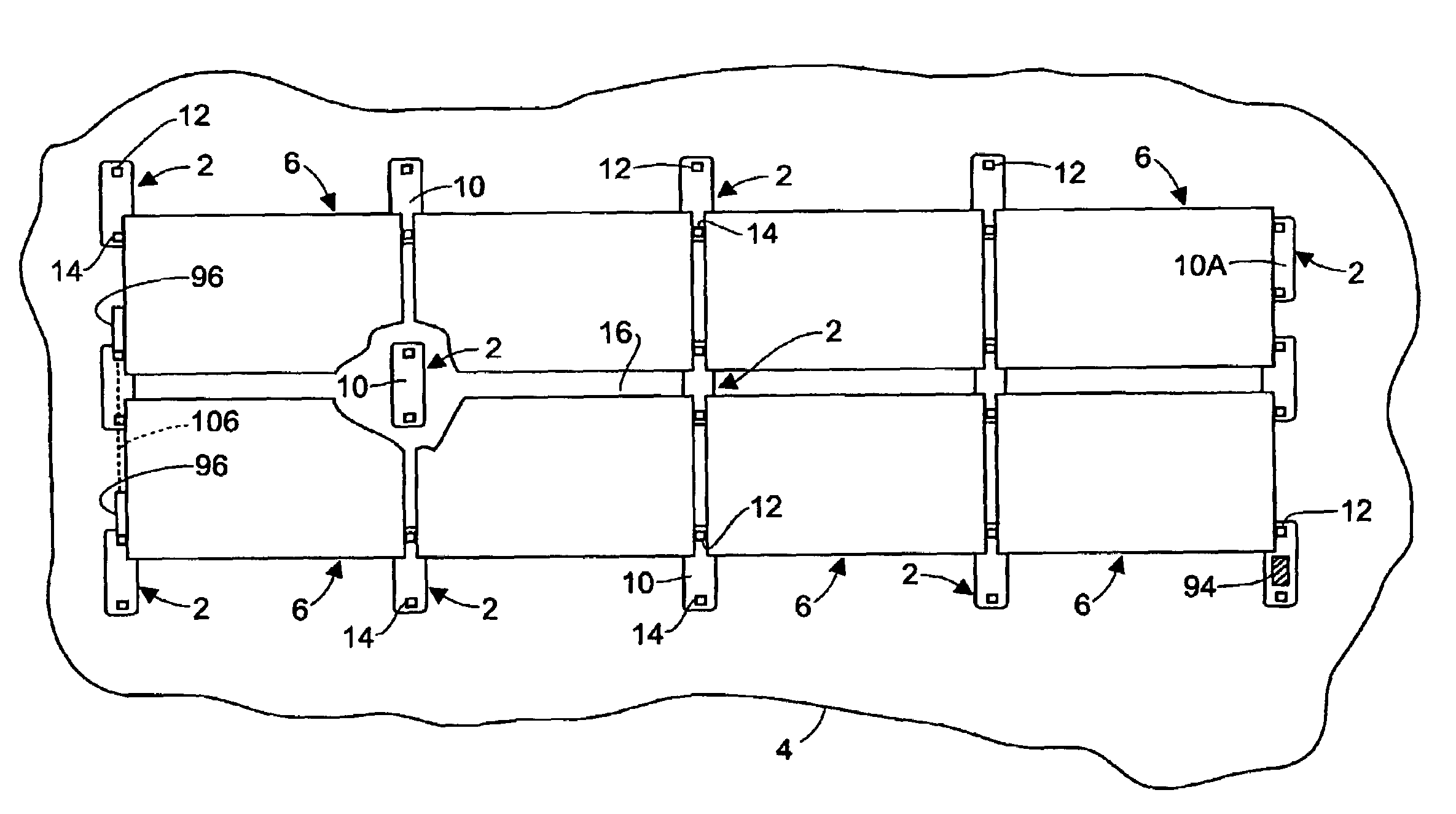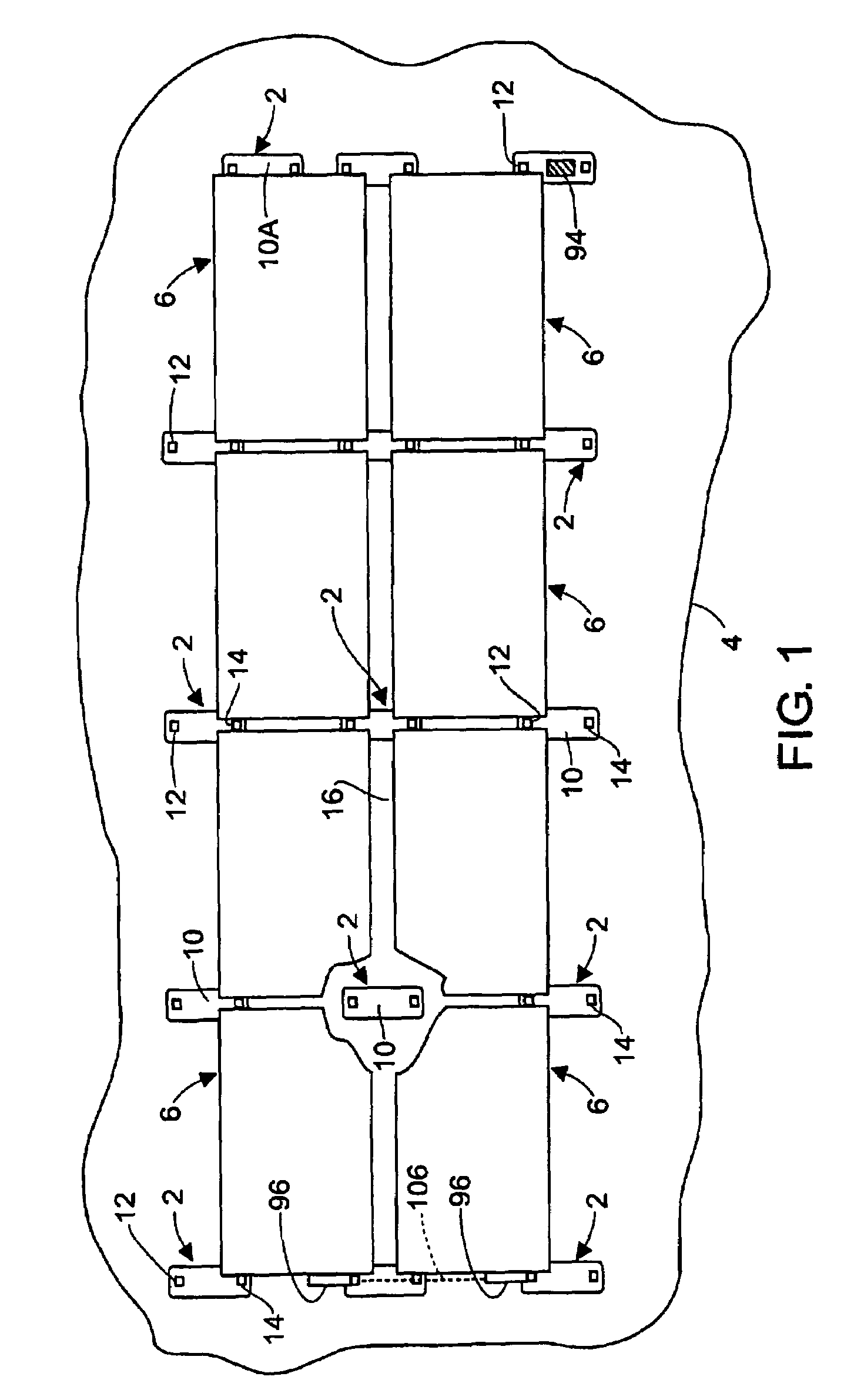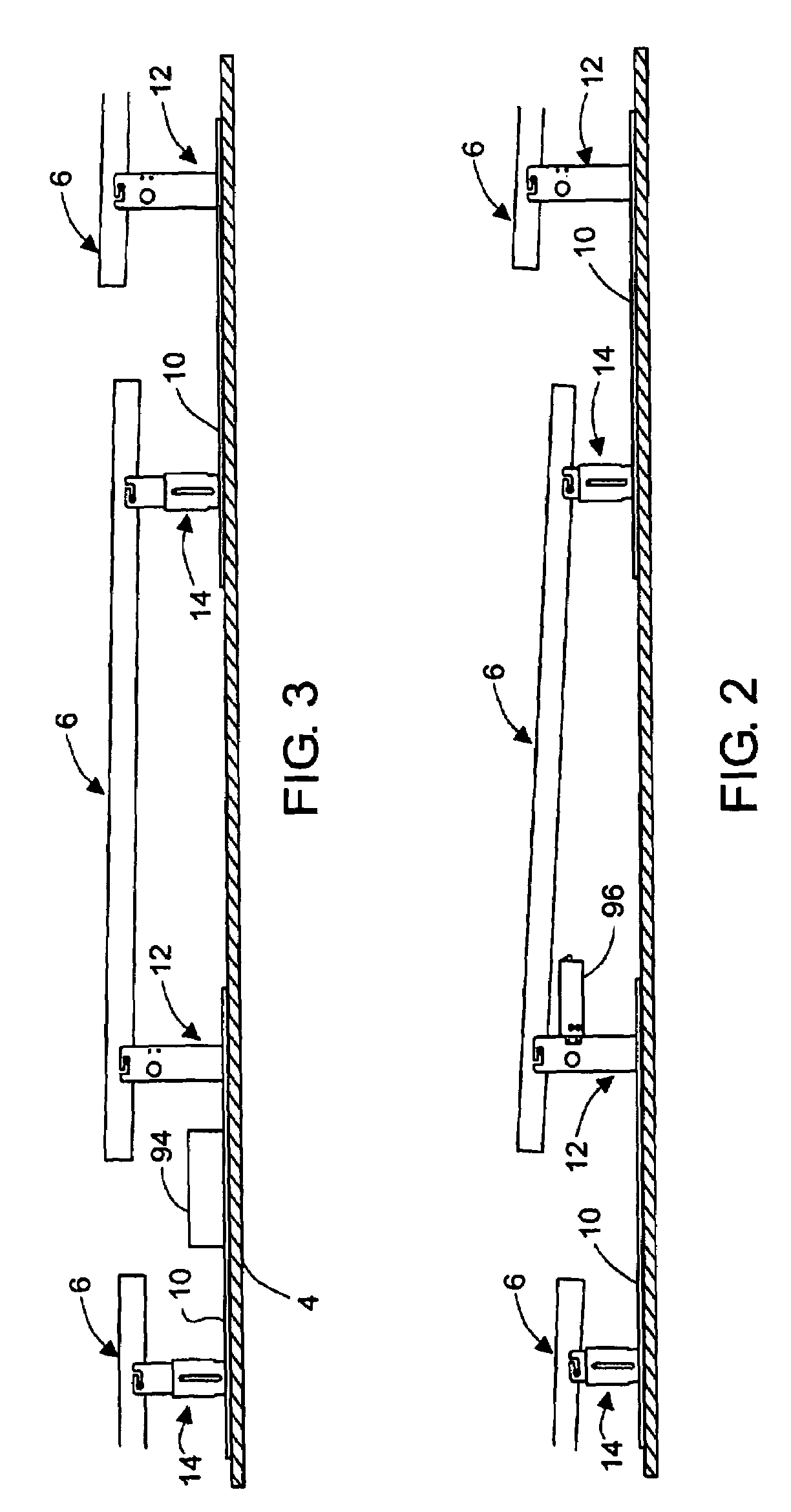Apparatus and method for mounting photovoltaic power generating systems on buildings
a photovoltaic power generation and building technology, applied in the direction of roof tools, solar thermal energy generation, solar heating energy, etc., can solve the problems that the non-solar cell components required for installing a functioning photovoltaic system become more critical with respect to overall system costs, and achieve the integrity and waterproof characteristics of the supporting roof structure, reduce or substantially eliminate wind uplift forces, and improve the effect of energy production
- Summary
- Abstract
- Description
- Claims
- Application Information
AI Technical Summary
Benefits of technology
Problems solved by technology
Method used
Image
Examples
Embodiment Construction
[0030]Referring to FIGS. 1, 2 and 3, the invention comprises a set of mounting stands 2 that are distributed on a supporting roof structure 4 and support a plurality of PV modules 6, with each stand consisting of a base plate 10 and two mutually spaced brackets 12 and 14 that are attached to opposite ends of the base plate. The brackets 12 are of fixed height. The other brackets 14 also may be of fixed height and shorter than brackets 12 in order to provide a selected angle of tilt to PV modules. Preferably, however, the brackets 14 are adjustable in height, as hereinafter described.
[0031]The mounting stands are laid out on a flat roof in a rectangular grid pattern of rows and columns as shown in FIG. 1, with the row and column spacing being determined by the dimensions of the solar modules panels to be mounted as well as the tilt angle and site latitude. Preferably the base plates 10 of the mounting stands are sized to introduce a defined separation distance between the rows of PV ...
PUM
 Login to View More
Login to View More Abstract
Description
Claims
Application Information
 Login to View More
Login to View More - R&D
- Intellectual Property
- Life Sciences
- Materials
- Tech Scout
- Unparalleled Data Quality
- Higher Quality Content
- 60% Fewer Hallucinations
Browse by: Latest US Patents, China's latest patents, Technical Efficacy Thesaurus, Application Domain, Technology Topic, Popular Technical Reports.
© 2025 PatSnap. All rights reserved.Legal|Privacy policy|Modern Slavery Act Transparency Statement|Sitemap|About US| Contact US: help@patsnap.com



